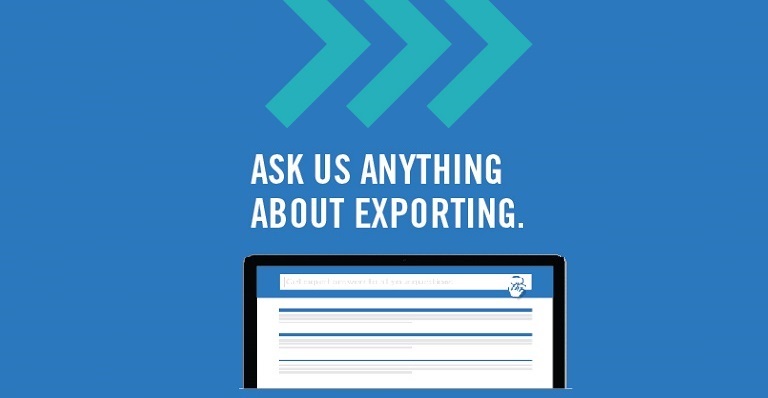
Gone are the days when “selling internationally” meant brick-and-mortar companies packaging up and shipping their physical widgets across borders. Increasingly, what we’re seeing is that there’s another contender on the international playing field: The indirect exporter.
Most companies don’t realize that when they’re serving as an integral part of a domestic supply chain, where goods or services are destined for export, they’re exporting indirectly. By understanding whether your company is a direct or indirect exporter, you can use the tips and examples below to help guide your own journey to global growth.
What is direct exporting?
To better understand what it means to be an indirect exporter, it helps to first understand what a direct exporter is. As markets become increasingly intertwined, the undertaking of exporting isn’t easy. Often, direct exporters sell directly to a consumer (B2C), a business (B2B), or distributor in a foreign country.
Whether selling B2C or B2B, direct exporters may be faced with challenges as they expand their operations abroad. Business activities that direct exporters have to overcome include:
- identifying a market to penetrate;
- finding customers;
- navigating foreign market regulations;
- dealing with customs;
- understanding tax implications;
- conducting due diligence;
- managing foreign exchange risk;
- delivering goods; and
- protecting intellectual property (IP)—just to name a few.
If not managed methodically and diligently, these risks could detrimentally impact their business and growth goals.
Imprimerie Gauvin, a Gatineau-based company, has been in the business of commercial printing since 1892 and shipped their first international order to the United States more than a decade ago. Since then, they’ve increased production capacity with new digital presses, as well as adding a print on-demand service and an interface designed for book publishers called the GoLibro. Expanding beyond Canadian borders through direct exporting has helped Imprimerie Gauvin remain relevant in their industry and continue their legacy of success.
You should also check out
Finding international distributors
Fortunately, there are plenty of resources to help direct exporters make a smooth transition into new markets. One is Export Development Canada’s (EDC) free download, Finding and keeping international customers guide, which discusses how to find partners and why selling internationally is a winning strategy.
Working with intermediaries such as distributors can be a beneficial way for a Canadian company to facilitate their entry into a new international market. Using a distributor’s insight and existing network, as well as their knowledge of the regulations and market requirements, can give your products a quick and efficient path into a new market.
Tornado Spectral Systems, a Toronto-based chemical analysis and measurement company, knew that their target industries were located mostly outside of Canada, so they decided to pursue international opportunities. They sell to key global markets within Europe, the Middle East, Asia, and the United States. In Japan, they identified their best route to success was using distributors who sell their products on their behalf to manufacturers and research and development (R&D) groups.
Indirect exporting, or how to become a key component of a Canadian supply chain
Now, with this better understanding of what direct exporting is, we can move on to explain indirect exporting. Typically, indirect exporting involves a Canadian company that sells to another Canadian company that, in turn, incorporates those products or services into their own value chain for export. Alternatively, indirect exporting can also involve a Canadian company selling domestically to a larger company, which then exports the goods internationally such as a distributor, an export or trading house (see below for more on these).
It’s important to understand that the most significant success factor will be your ability to build your network and integrate into a strong supply chain—or better yet, several. Some benefits to being in an international supply chain include:
- The control of how your product or service is positioned to your customer, maintaining a consistent brand.
- How your products can still reach international waters without the international risk.
- Increasing your profit margins as they may be better protected than when dealing with an intermediary or distributor directly.
- Companies with significant domestic success in Canadian supply chains are often better positioned for success if they decide to export directly into international supply chains.
When looking to integrate your company into a larger supply chain, try to identify the key industry players who would find your solution most attractive. Your solution could, for example, benefit their end user by:
- reducing their operational costs;
- enabling efficiencies;
- increasing their top line revenues; or
- giving them an advantage over their direct competitors.
In Canada, the major supply chains may include oil and gas, timber, mining and extraction, agriculture and fishing, as well as the automotive industry. Check out EDC’s guide, How to qualify as a preferred vendor, which covers steps to help you select, approach, and impress the partners who are right for your business.
To illustrate Calgary-based Advanced Safety Paramedics specializes in providing worksite safety solutions. Their operations department oversees industrial safety solutions in many different types of environments all over Western Canada, and they found particular success in the construction and the oil and gas drilling sectors. That success and their track record for performance have enabled them to build solid business relationships and a strong industry reputation—both key factors that helped them prepare for their expansion in the U.S. market and beyond.
Working with an export house or trader
Working with a distributor, an export or trading house is another option for Canadian companies that want to expand the markets for their products, but don’t have resources or time to export directly. Here’s why:
- You don’t necessarily have to endure additional operating costs associated with foreign market entry.
- You don’t necessarily need to spend resources investigating buyers and conducting due diligence.
- You can stick to what you know and be an expert in the field you know best.
- You can potentially increase your gross revenue by moving product through an intermediary such as a distributor, who is deeply connected in the international marketplace.
In Canada, using a trading or export house to export your goods is particularly prevalent in the agri-food industry. One way to find a trading or export house is to refer to industry associations. Industry and trade associations often have access to lists of companies through their members' directory. These companies can become your potential partners in the target market. For example, companies selling crops, grains, or pulses can consult the Canadian Special Crops Association—they have a member/partner search that allows you to filter for partners.
As an example, Surrey-based Adroit Overseas Enterprises Limited is an agro-commodities processor and exporter that sources grains, pulses, oil seeds, and feed in Canada and exports their products worldwide. Canadian companies can leverage Adroit as a channel for exporting, or as an international sales arm while maintaining their focus on their business. Adroit is also one of the partners you can find in Canadian Special Crops Association’s member directory tool.
While there are many benefits to working with an export house or trader, the following are some considerations to keep in mind:
- It can have an impact profit margin, as profits may be shared with the export house or trader.
- Focusing exclusively on one trading house may create a higher concentration of risk for your own accounts receivable.
- You may have less control over how your product is positioned internationally, as the trader could decide this for you.
Let’s keep in touch: EDC’s export advisors are here to help
Like many exporters, both direct and indirect, there’ll come a time when you need answers about clearing customs, choosing an international market, navigating tax requirements, conducting due diligence, or other export-related questions. Not to worry. Our Export Help Hub has the insights you need to succeed in the international markets. Get quick, concise online access to questions and answers curated by EDC experts—online, anytime.






